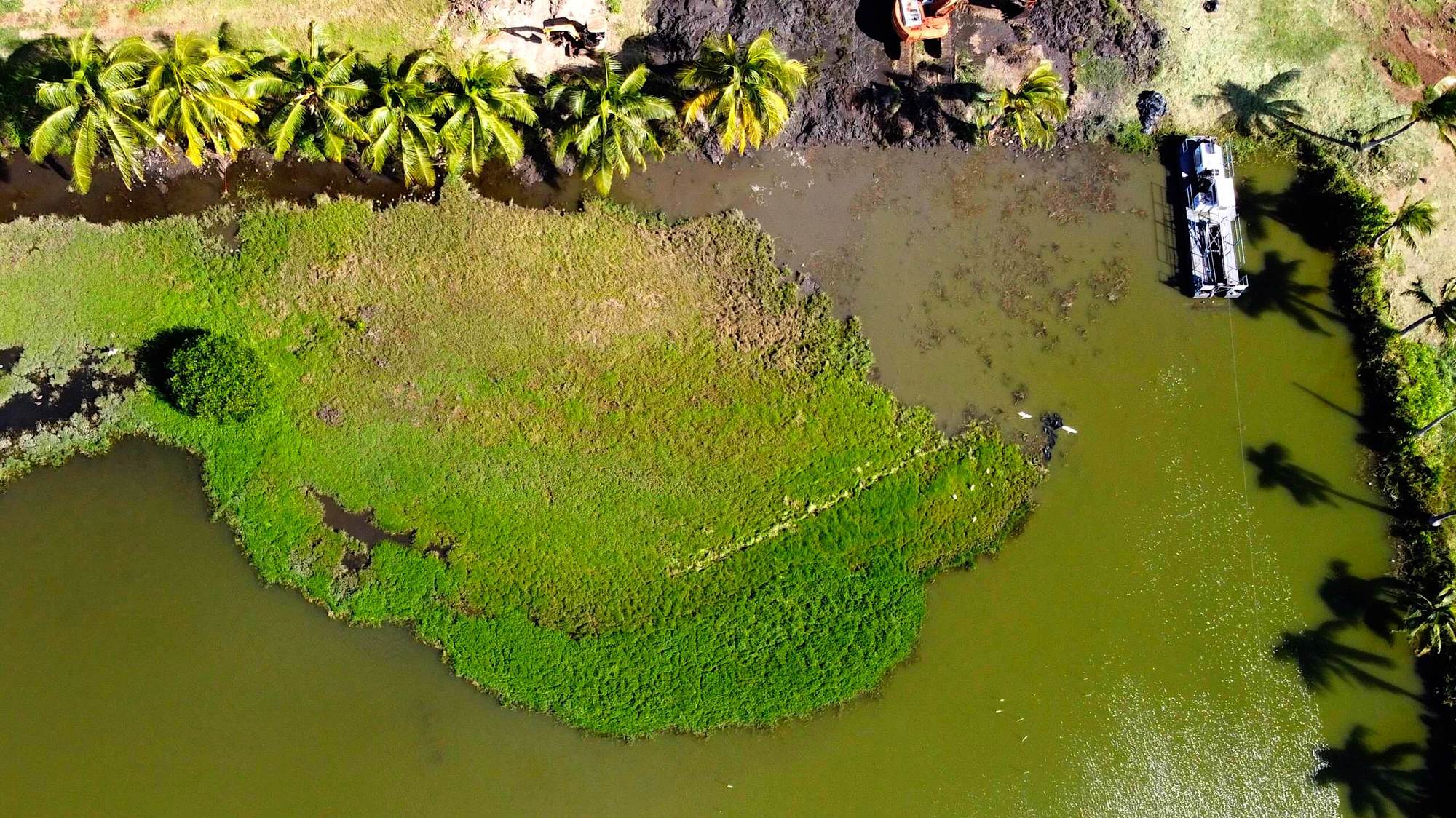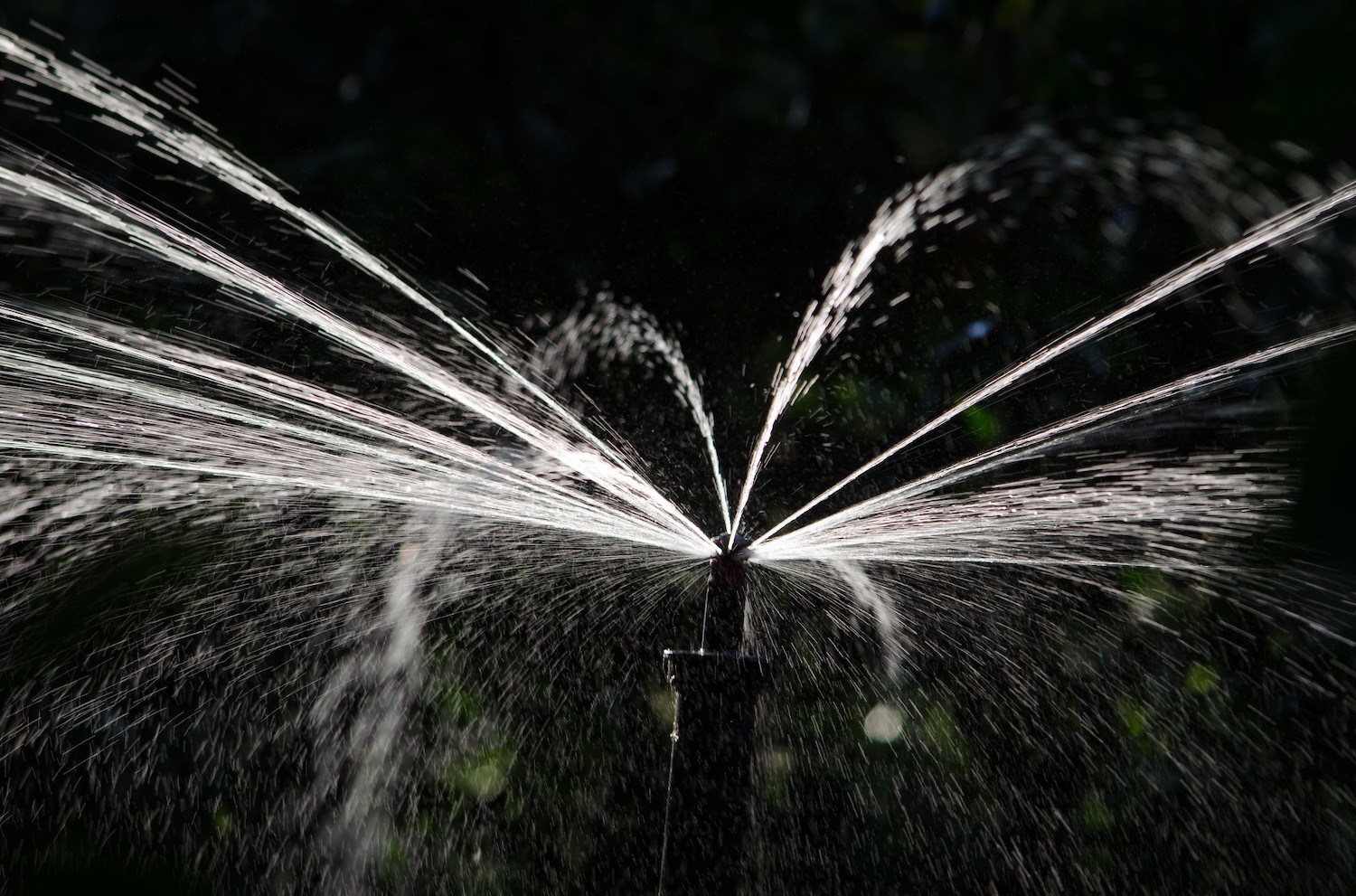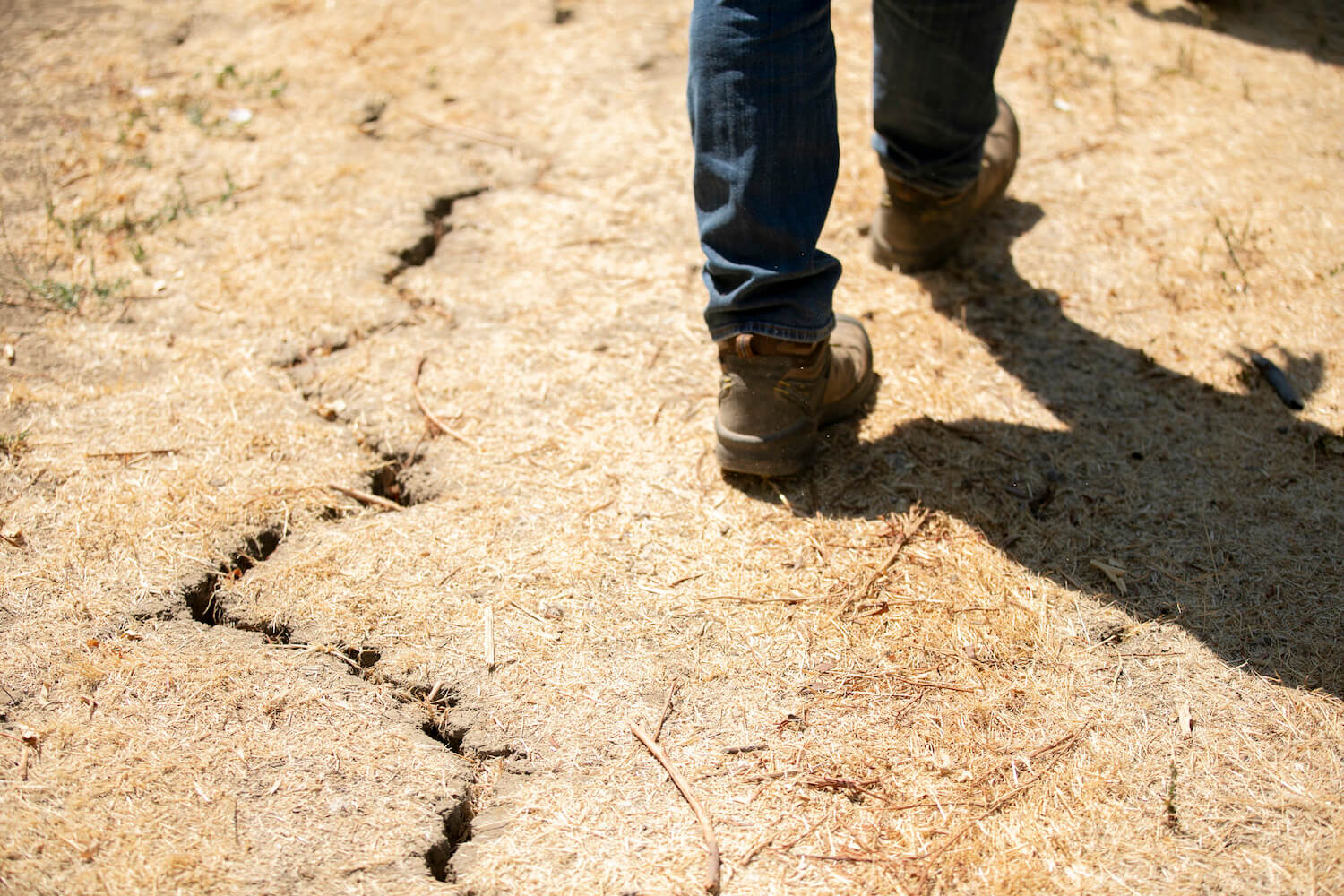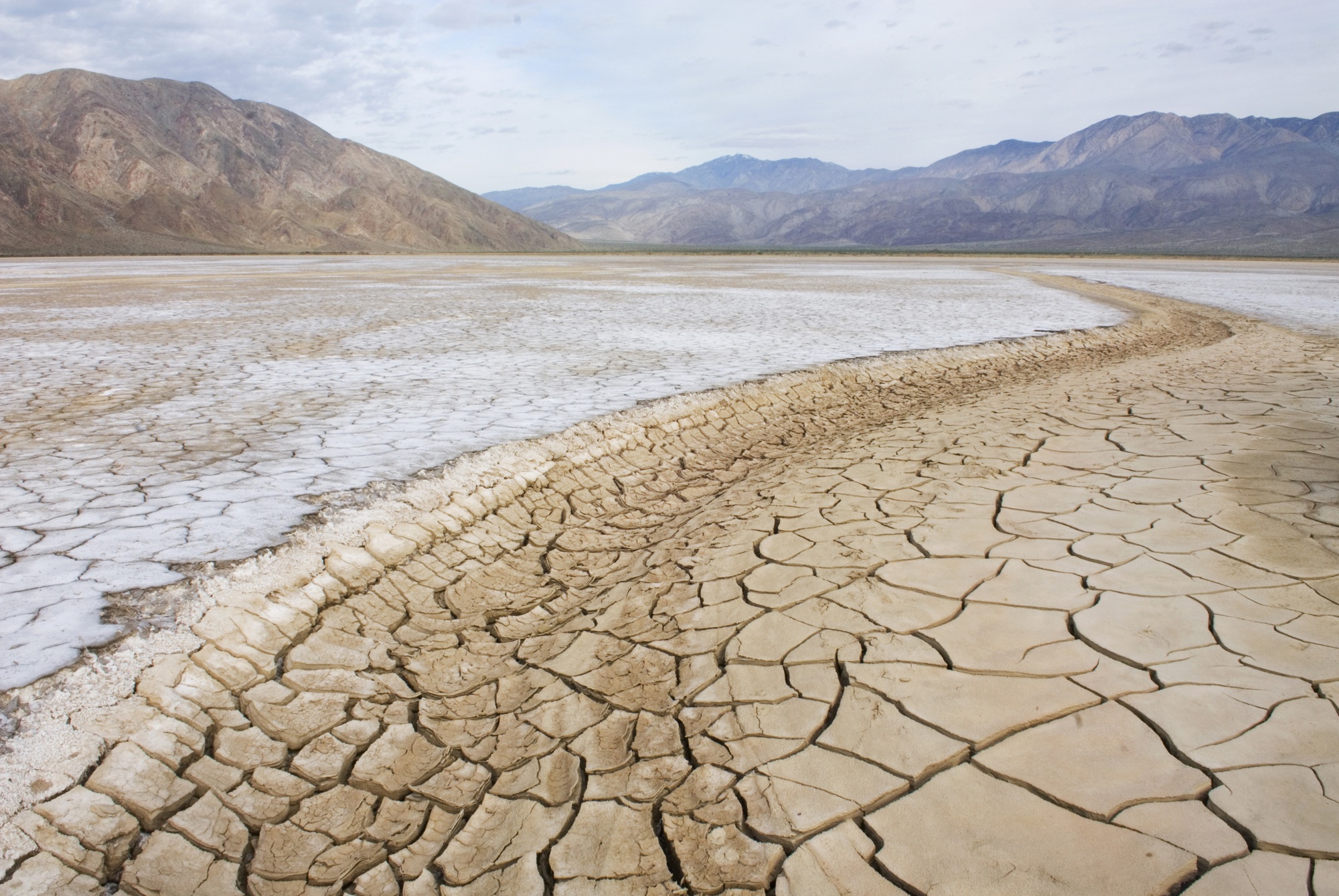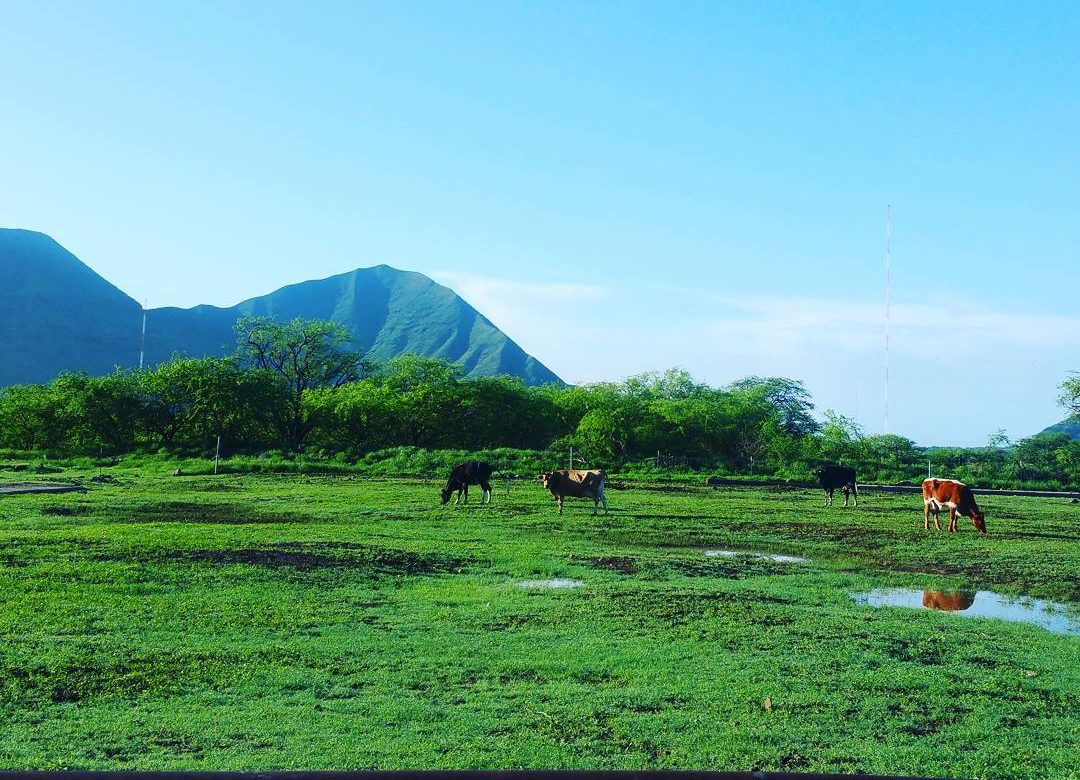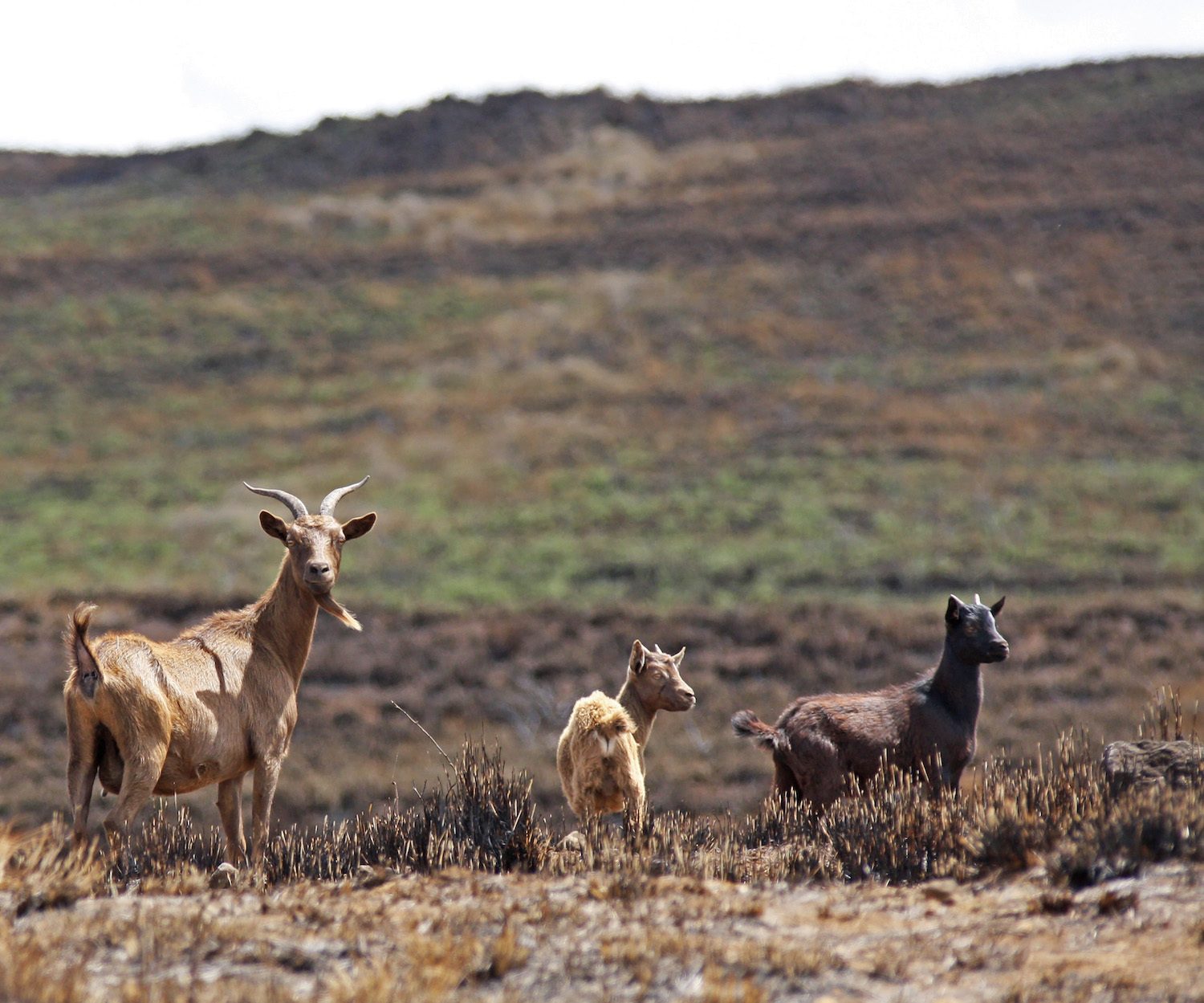
Tim Wright/Honolulu Civil Beat
More fires. Worse drought. Excessive heat. The state’s agriculture industry is facing serious environmental problems in the years ahead.
Michelle Galimba has always been aware of the risk of wildfires to her cattle.
This story was published with permission from Honolulu Civil Beat.
A second-generation rancher on Hawaii island, Galimba learned long ago that when the grass that feeds her family’s herd turns brown and brittle, the flick of a cigarette, a strike of lightning or an impromptu campfire can spark disaster.
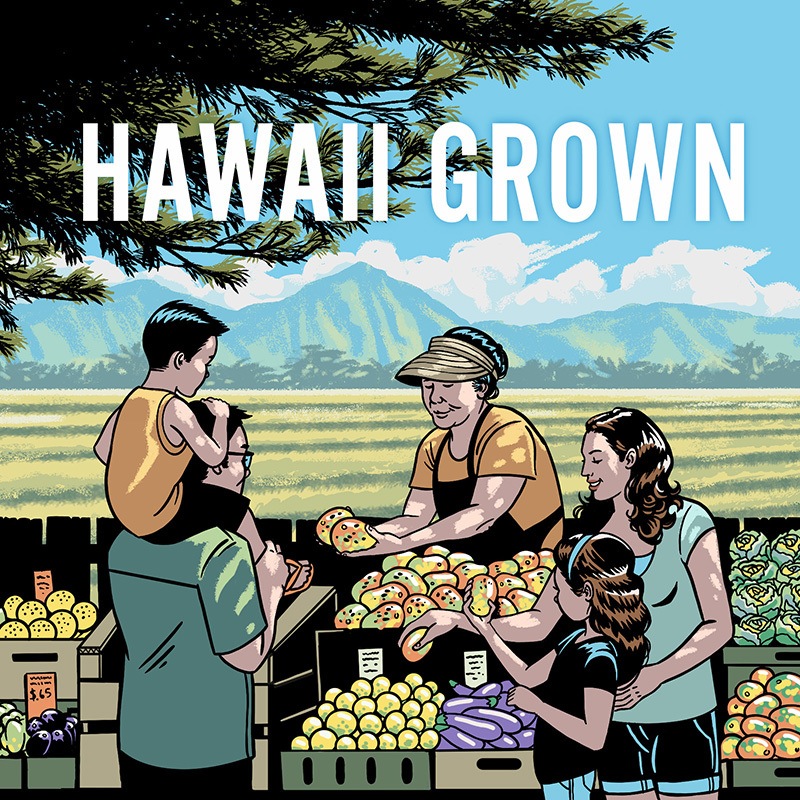
Honolulu Civil Beat
“Hawaii Grown” is funded in part by grants from the Ulupono Fund at the Hawaii Community Foundation, the Marisla Fund at the Hawaii Community Foundation, and the Frost Family Foundation.
For Kuahiwi Ranch, fire danger was usually a seasonal concern. Something to watch out for in the hot and dry summertime. In the last 10 years, that’s changed, she said.
“We’ve lost a lot of the seasonal patterns, so a drought can happen at any time,” said Galimba, who watched a fire in 2017 scorch 800 acres of land leased by her family. “It used to be a little more predictable. You knew when to be on the alert.”
When people talk about climate change in Hawaii, it’s often through the lens of what might lie ahead if global temperatures continue to rise. But climate change is already here, and the impacts of a warming planet are being felt by the state’s farmers and ranchers.
On the North Shore of Oahu, corn growers are having a harder time pollinating crops. On Kauai, farmers are grappling with the loss of topsoil from intense flooding. On Hawaii island, warmer nights are making it harder for macadamia nut trees to flower.
“Agriculture is probably impacted more severely by climate change than any other industry that I can think of,” said Jerry Ornellas, a farmer on Kauai. “We’re really the canary in the coal mine.”

Climate change and poor land management are contributing to wildfires in Hawaii.
KITV
Ornellas grows orchard crops like lychee, along with paddy crops like rice, on a 15-acre farm on Kauai. An intense flood in 2018 washed away nearly an inch of topsoil — something that takes at least 100 years to form naturally — on his farm. It also rerouted a stream that runs across his land.
Intense weather events are just one of the challenges facing the state. Farmers are dealing with an ongoing drought, more unpredictable weather patterns, and an overall loss of rain on the leeward sides of the islands.
Weather has been a favored topic of farmers for time immemorial. But now, those conversations are shifting to something more ominous than what the rainfall will be like this year.
“We’ve lost a lot of the seasonal patterns, so a drought can happen at any time. It used to be a little more predictable. You knew when to be on the alert.”
“Something that we’re kind of talking about is, is climate change going to threaten the existence of macadamia nuts in Hawaii? Of certain food crops?” said Nathan Trump, president of the Hawaii Macadamia Nut Association. “Are weather events just going to become too severe to make it so that we can’t farm?”
To make sure that agriculture has a future in Hawaii, researchers from the University of Hawaii are seeking out crops that will be able to withstand the increased heat, soil salinity and droughts expected in the state’s future. Farmers, meanwhile, say more research is needed, along with investments in the kinds of infrastructure that will help agriculture thrive in a more unpredictable climate.
The time to invest in this kind of research — and to support the kinds of sustainable agriculture that can take more carbon out of the atmosphere than it produces — is now, they say.
“The time to fix the roof obviously is when it’s not raining,” Ornellas said.

Wild goats forage for vegetation at a pasture scorched by the July 31th brush fire next to Waikoloa Villiage.
Tim Wright/Honolulu Civil Beat
A warming, more unpredictable climate
Hawaii is blessed with a year-round growing season and an array of microclimates that allow farmers to grow a dizzying variety of crops. But the state has been experiencing a long-term decline in rainfall, said Chip Fletcher, a climate scientist from the University of Hawaii.
There are no longer any perennial running streams on the Leeward Coast of Oahu, and the state has been seeing a similar drying up of watersheds in rain shadow areas across the islands — a huge concern, given that agriculture is so water dependent.
At the same time that the state is experiencing an overall decline in rain, the rain it gets is becoming more intense, Fletcher said.
Essentially, we are experiencing longer periods of drought coupled with more intense storms — like the one that caused catastrophic flooding on Kauai in 2018. This is a global phenomenon, Fletcher said. A fundamental characteristic of a warmer atmosphere.
The state is also getting warmer. Hawaii’s average temperature increased about 2 degrees between 1950 and 2010, according to the National Oceanic and Atmospheric Administration. On Oahu, 2019 was the hottest year ever recorded. Statewide, temperature records were broken 300 times that year, Fletcher said.
Changes in temperatures, wind, rain patterns and incidents of extreme weather can all wreak havoc on crops.
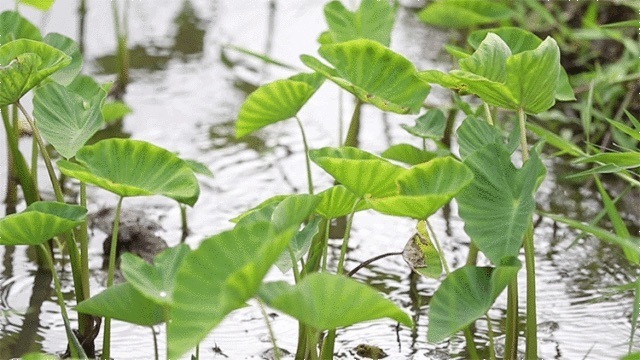
Climate change could devastate taro production, as hotter temperatures and increased evaporation lead to higher salinity in the water and soil—not to mention issues of water access.
Cory Lum/Honolulu Civil Beat
Hotter summers on Oahu have led to a decline in the pollination of sweet corn, says Amjad Ahmad, an assistant extension agent at UH Manoa’s College of Tropical Agriculture and Human Resources who helps bridge the gap between researchers at the college and farmers who need assistance. That could be in part because corn silk needs to remain moist in order for pollen to stick to it and make seeds, and heat may be drying out the corn silk, among other issues.
It’s not just pollination that is at risk.
With extra heat, plants struggle to absorb moisture from the soil, Ahmad said. When plants can’t absorb enough water to compensate for the loss of moisture from their stomata — essentially the plant version of pores — plants aren’t able to make food and they don’t grow.
A bigger worry for Hawaii than challenges with corn or lettuce is that too much heat can cause an increase in the salt content in the state’s beloved taro fields, which over time can cause major problems for the crop.
Ahmad personally grows about 10 varieties of Okra. A recent crop was half as tall as the plants were a few summers ago, he said — something he attributes to heat. Too much heat can cause other plants, like lettuce, to bolt or flower, essentially ending the plant’s life early and rendering it useless for harvesting and sale.
Ahmad, who tests different varieties of crops to see which ones are best suited for the islands, said he had multiple species of beets and daikons bolt prematurely this summer.
A bigger worry for Hawaii than challenges with corn or lettuce is that too much heat can cause an increase in the salt content in the state’s beloved taro fields, which over time can cause major problems for the crop.
Heat can also be a challenge for growing macadamia nuts — one of the state’s most successful crops.
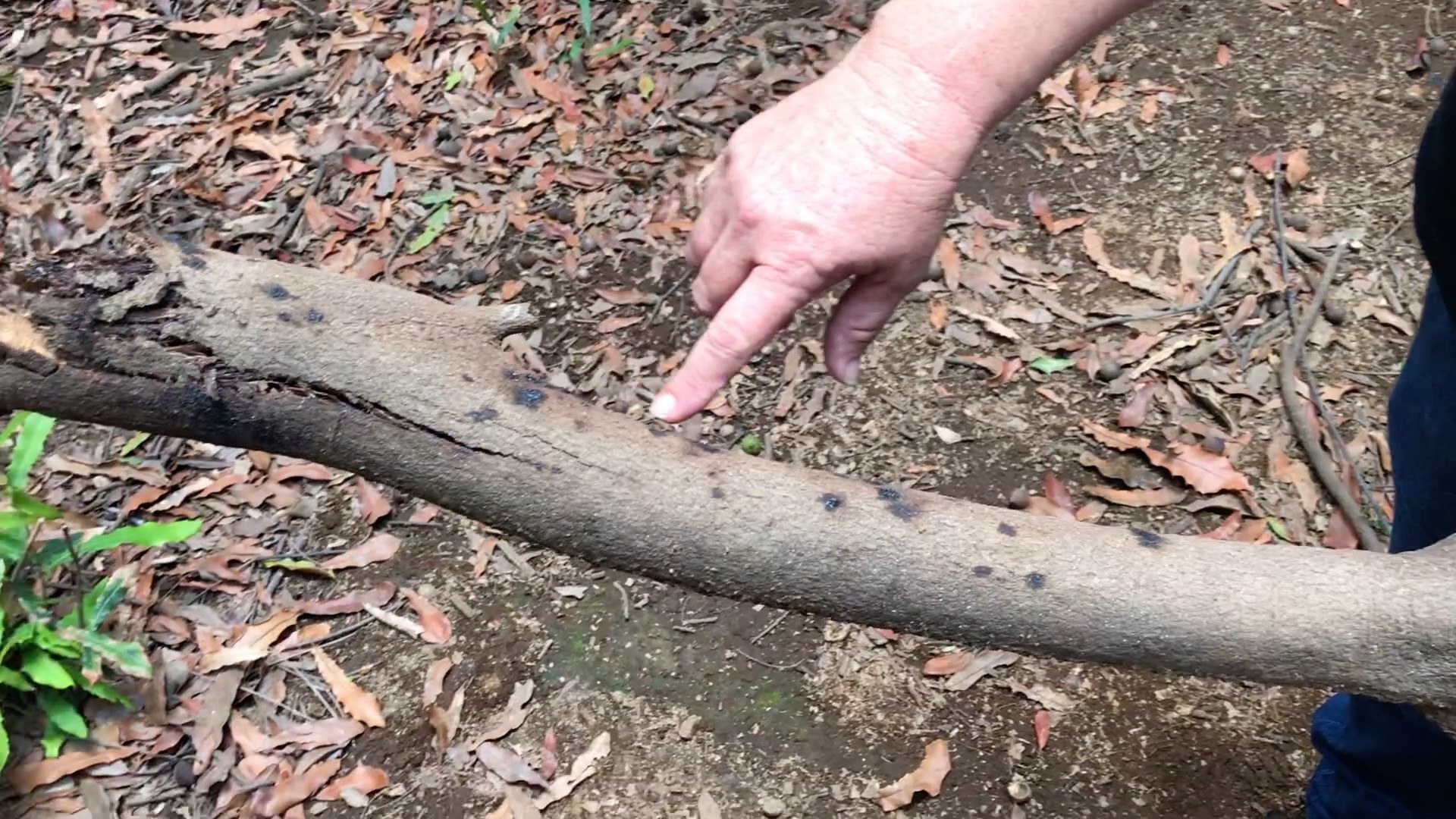
Climate change can make trees more susceptible to damage from pests and pathogens.
Nick Grube/Honolulu Civil Beat
In order for macadamia nut trees to flower well, nighttime temperatures in the winter have to hit 63 to 64 degrees for a certain number of days. In years where the temperatures have been higher than normal, larger farms in the Hilo and Ka‘u region have had lower yields because the flowering wasn’t as good, said Trump of the Hawaii Macadamia Nut Association.
An increase in pests and root-borne pathogens — exacerbated by heavy rains that create soil conditions that microorganisms thrive in — have increased the decline of macadamia nut trees on the Hilo side of Hawaii island, Trump said. Several hundred acres of trees have been abandoned by farmers in recent years, he said.
Many factors impact crops and the challenges facing Hawaii’s farmers extend beyond climate change. For example, the macadamia nut trees being abandoned in the Hilo region of Hawaii island are old — which could make them more vulnerable to disease and pests.
“Realistically, things don’t look good. Agriculture is not doing well in Hawaii, unfortunately, and climate change is not going to help to improve the situation.”
But farmers and scientists say the link to climate change is significant. And climate change doesn’t just impact things like how well crops pollinate and grow.
“What about our human resources? Are we going to be able to find people to work in really scorching heat?” Ornellas said.
Production methods are going to have to change to accommodate climate change. Transportation will be impacted. Marketing. Even things like capital are a concern for farmers, he said. Is the money going to be available to farmers for them to make the changes they need to make?
Looking to the future
Farmers are inherently optimistic by nature, Ornellas said.
“We’re always going to make money next year. We’re always going to be OK next year,” he said.
But Ornellas doesn’t sound terribly optimistic when he talks about the future of farming in Hawaii.
“Realistically, things don’t look good. Agriculture is not doing well in Hawaii, unfortunately, and climate change is not going to help to improve the situation.”
For farmers to thrive in the coming decades, Ornellas says, more needs to be done now.
Hawaii’s agriculture has been in transition for a long time, moving away from the plantation era into a system of more diversified agriculture. But the larger plantations used to maintain a lot of infrastructure for farming, Ornellas said. Canals. Drainage ditches. Gauging stations to monitor the volumes of water and stream flows — something that the east side of Kauai no longer has, he said.
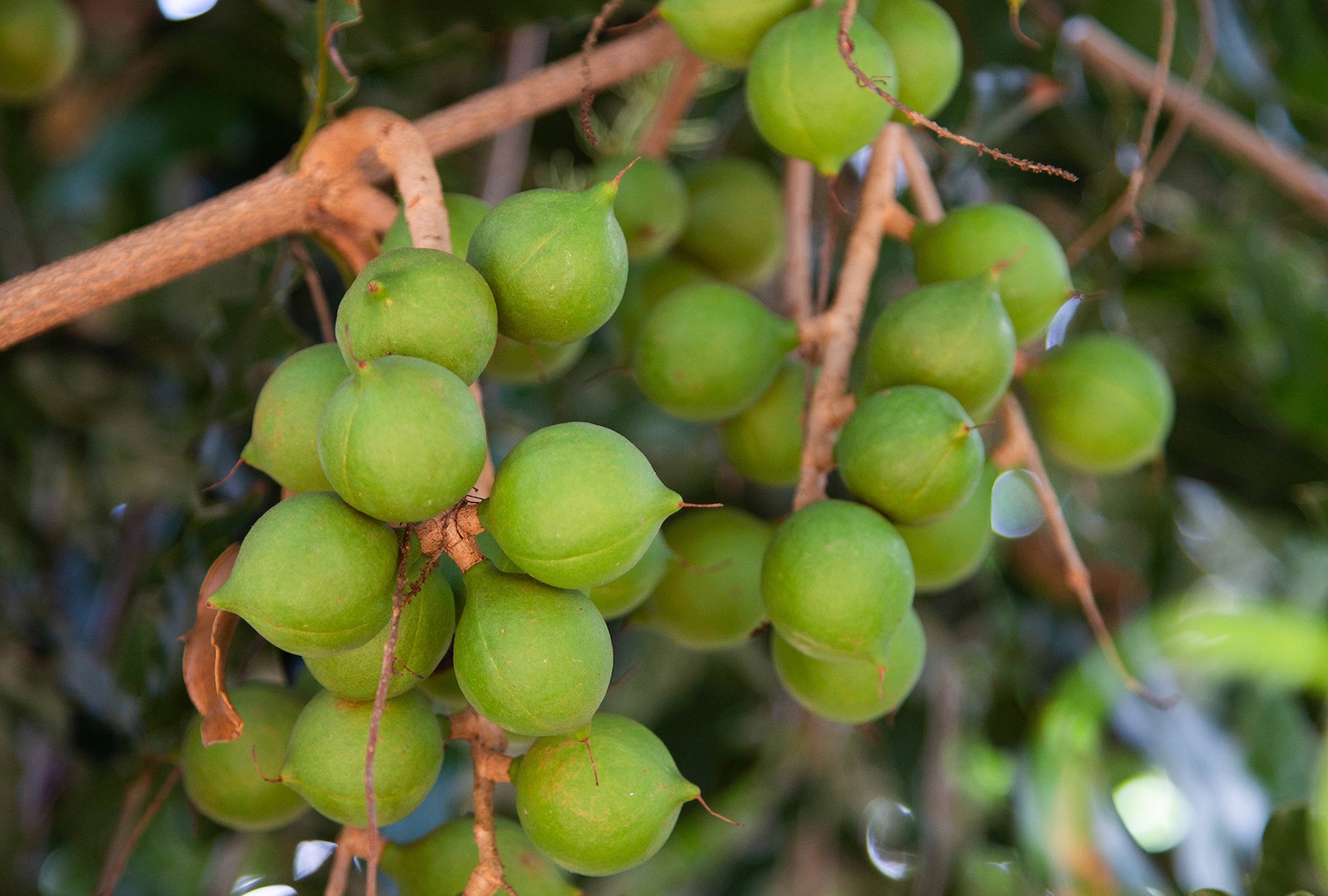
Tree crops like macadamia nuts can help reduce the amount of carbon in the atmosphere.
Christina Papanicolaou/Honolulu Civil Beat
Addressing the state’s water supply is a huge challenge. Aquifers are recharged with long, gentle rainfall that lasts multiple days, Fletcher said.
During massive rainstorms, most of the water runs off to the ocean. If the state sees a decrease in the type of rain that sustains the state’s water supply and an increase in intense rainstorms, how can Hawaii’s water engineering system adapt to that?
Another approach for adapting is to change the varieties of crops that are grown in Hawaii. Ahmad and other extension agents at the university have been looking for different kinds of sweet corn and other crops that are more adaptable to Hawaii’s changing temperature.
This was a successful tactic for farmers in the Philippines, Ahmad said. At some point, salty water started to impact rice production and so farmers found rice varieties that had a higher salt tolerance.
A macadamia nut orchard—when it’s managed well—can sequester 5.8 tons per acre of carbon per year.
More research is needed on all fronts. Research on the state’s changing climate, on how to make agriculture more adaptable — and how to best utilize farming in the fight against climate change.
Tree crops can be more resilient than other crops. They also remove carbon from the atmosphere and put it in the soil. A macadamia nut orchard — when it’s managed well — can sequester 5.8 tons per acre of carbon per year, Trump said.
“We see the challenges of climate change,” Trump said. “But we also see the opportunity to grow our industry as a way to mitigate climate change.”
“Hawaii Grown” is funded in part by grants from the Ulupono Fund at the Hawaii Community Foundation, the Marisla Fund at the Hawaii Community Foundation, and the Frost Family Foundation.

